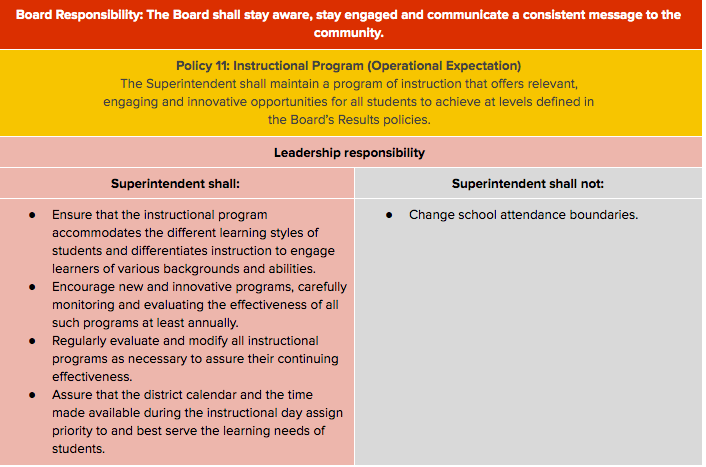A District Governance Model That Works: Sun Prairie Area School District, WI

Responding to the crisis
By now, most of the educational community knows this much: Healthy school systems had more capacity to transition to mass distance learning than school systems with misalignment.
Like all school systems around the nation, the Sun Prairie Area School District had to pivot quickly as county health department guidelines changed by the minute. Instructional leaders created a framework for equitable, student-focused processes and plans for distance learning, decisively endorsed simple online platforms for delivery, and began engaging and communicating for a district-wide rollout. Sun Prairie assessed community wireless access, distributed over 10,000 devices, set up delivery centers for food distribution and ramped up access to support services in only two days.
Our Enabling Condition: Governance
In our leadership “After Action Review,” we reviewed enablers and obstacles to our success. Our capacity to rapidly respond and execute in the face of such a dynamic situation really boils down to one relationship— that of the Board and the Superintendent. The Sun Prairie District utilizes a Coherent Governance framework. The Board has established very high expectations for the performance of the school system (student achievement data is the superintendent’s evaluation), and in return places a high degree of trust in the superintendent to effectively lead and manage the district. Included in the governance structure are a set of values and “may” and “may not” structures that clearly delineate the domain of operation for the Board and the Superintendent with the expectation of frequent and transparent lines of communication.
Since our governance structure allowed Sun Prairie leaders to proactively understand clear expectations, we were able to quickly develop distance-learning programming consistent with those expectations without falling into a “mother may I” loop, an operational permission-based decision-making process that delayed the response of many public districts throughout the state and nation.
A brief example of how the boundaries between Board responsibility and Superintendent leadership are shaped can be found in the example below from a District policy.

In practice, this policy (and others) created the space for district leadership to move quickly in creating procedural and practice changes to accommodate the needs of learners and staff. During the coronavirus crisis, that entailed doing things such as:
- Grades: implementation of a Pass/No Pass grading practices to ensure that we hold kids “harmless” for these events so far beyond their control. Most parents and teachers breathed a sigh of relief with this decision.
- Attendance and engagement: shifting how attendance was taken by focusing on meeting the needs of kids first, asking “how are you; what do you need” before engaging in learning.
- Daily / weekly schedule: Initially the weekly schedule was unaltered, with the expectation that teachers prepare five learning experiences per day. We quickly realized that the closure was going to last a long time, and that this schedule was untenable for students, parents and teachers. We shifted within a week to a three-day schedule for students, with Monday’s and Friday’s for teachers to confer with colleagues and engage in outreach with specific students.
Healthy systems had the capacity to rapidly respond to this unprecedented situation.

Our After Action Review surfaced two key findings:
- Board leadership in governance matters.
- When the clear expectations of school operations are communicated in a trusted space between the superintendent and the Board, the entire school system is enabled to rapidly respond to the needs of kids and families.
In normal circumstances, the governance model is foundational to the District’s ability to find inspiration and quickly ideate programs and opportunities that most effectively meet kids where they are. It was essential to maintain a clear focus on equity: a kids-before-content approach and immediate and clear communication about procedures and practices that impact students’ daily lives, schedules and health. When we eventually get back together, we think the staff in Sun Prairie Schools will be ready to meet kids where they are, and provide them exactly what they need when they need it because of this foundation.
A School Board President’s Perspective on Governance

Leading and managing a school district is difficult during normal situations. In these unprecedented times, it seems almost impossible. So many changes in such a short amount of time: Chrome Books and internet access, revising curriculum to work with distance learning, staff duties and contracts, feeding hungry children when school is not in session, graduation and prom. And the list goes on. As I watch and hear from colleagues across the state, I am so thankful that five years ago the Sun Prairie Area School District (Wisconsin) adopted the Coherent Governance framework.
When I started on the school board eight years ago, we had no governance framework. It was confusing and sometimes chaotic. I often said it felt as if the district had eight superintendents: seven board members and one superintendent. While that structure is certainly not ideal, it can be manageable during normal times. But in a crisis, there cannot be eight people trying to make decisions.
When we hired Dr. Brad Saron as our Superintendent in 2014, one of the first things we did was look at governance structures. Many of us knew we needed to change. We needed order, structure, and role clarity between the board and the superintendent. We found it in Coherent Governance.
In these uncertain times, we have a governance framework that is clear on who is responsible for what. And if there is confusion, we check our policies and the answer is there. The superintendent, as the CEO of a school district, needs to have the day-to-day authority to make decisions, especially decisions that may need to be made quickly. Of course, the board holds the superintendent accountable through policy, but Coherent Governance has freed the hands of the superintendent to make the best decisions s/he believes are best for children, staff, and the community.
One thing I have learned while serving on a school board is board members do not like surprises. Dr. Saron has communicated with the board to an exceptional degree during this pandemic. While the board has not been involved in many of the decisions that needed to be made, and rightfully so, we have been kept in the loop not only on the decision but also the rationale.
Board of Directors for Fortune 500 companies are not involved in the day-to-day management of their corporations. But many believe school board members are uniquely qualified to make daily decisions for the district, though the vast majority of us are not educational experts. Leave the management to the superintendent and her/his staff while the board focuses on setting the vision and expectations for the district. This is exactly what Coherent Governance has allowed us to do. And our children are better off because of it.
Curt Mould is Director of Digital Media, Innovation & Strategy. His background includes 6-12 teaching (Science), principalships, and district level administration in urban and suburban environments. He has studied design for learning at Harvard’s Project Zero, the K12 Lab at Stanford d.School, and holds certifications in Lean Six Sigma (Green Belt), Board Governance Strategy and Balanced Scorecard and was a writer on the 2017 ISTE standards writing teams.
Brad Saron has been Superintendent in Sun Prairie since 2014. Brad’s experience in education began as a high school English teacher and principal. He is certified in Prosci Change Management, Balanced Scorecard, Lean Six Sigma, and is a Coherent Governance Practitioner. He resides in Sun Prairie with his wife and four children and has the unique vantage point of having at least one of his children in each level of school.
Steve Schroder is currently School Board President of the Sun Prairie (Wisconsin) School Board where he has served on the board since 2012. Steve is a student of board governance and helped the Sun Prairie School District implement Coherent Governance in 2015. He and his wife Erin, a high school math teacher in Waunakee, are the proud parents of two girls.
Transcend supports communities to create and spread extraordinary, equitable learning environments.

